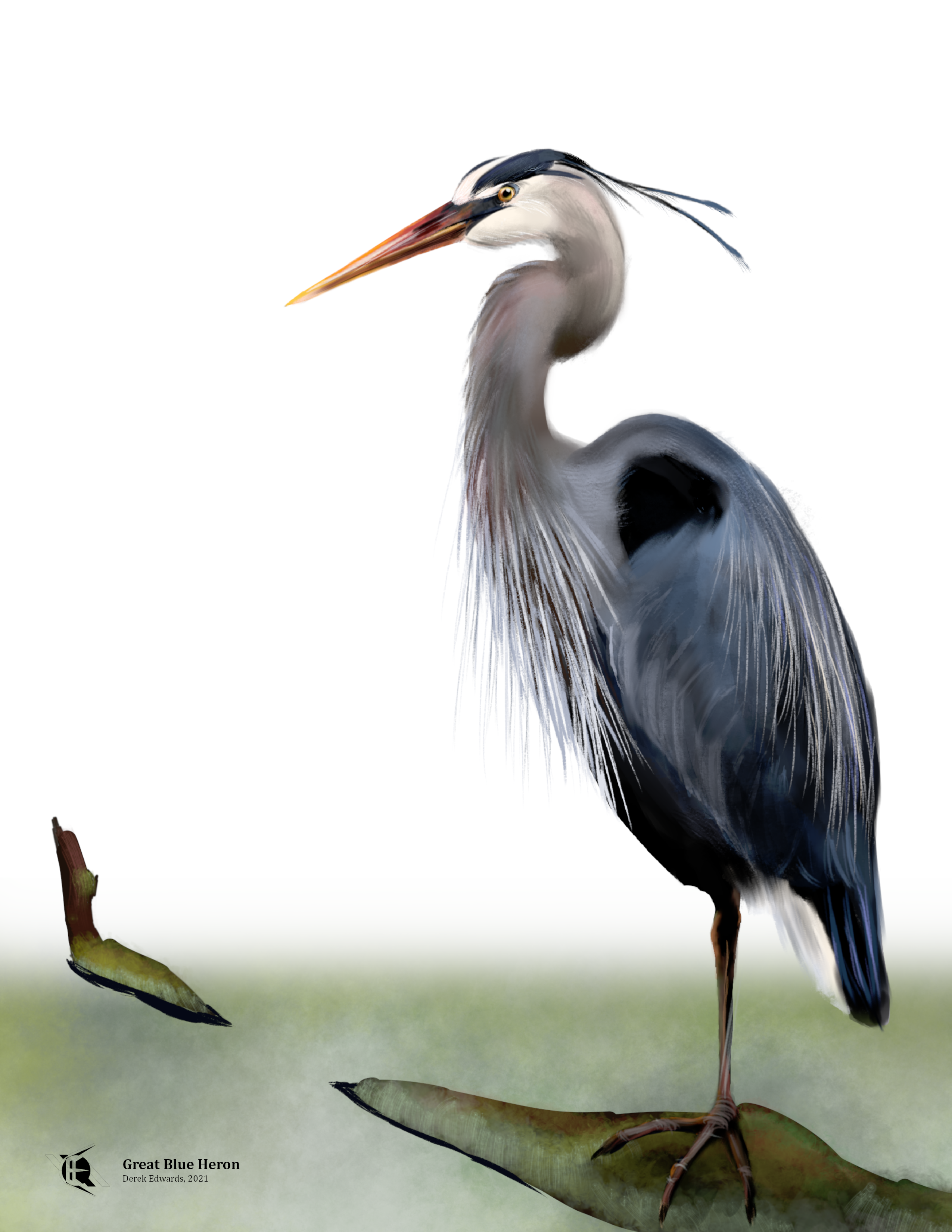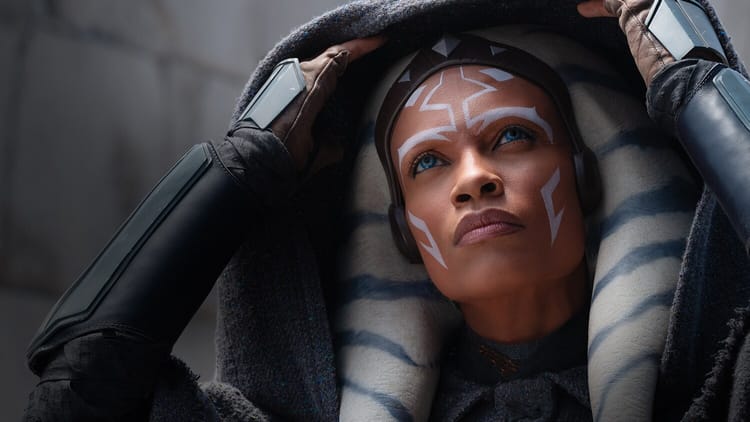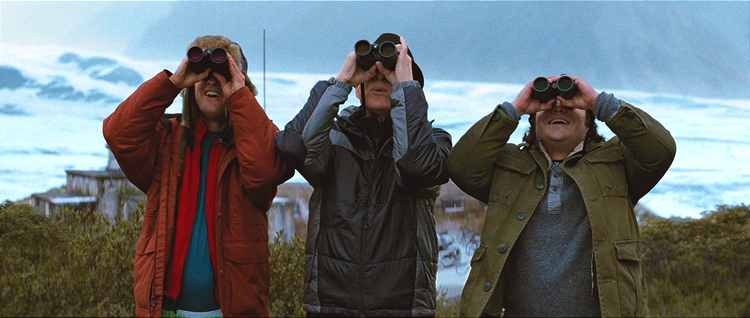
Running Commentary 7/26/2021
Hello,
The Olympics are back! Say what you will about the people running the games, I like the Olympics. It's fun to see people being the best at things. I watched the surfing for a few hours Saturday night. I'm still not confident that I understand how the winners won, but it was relaxing to have on, with the waves crashing and all.
Anyway...
Watching...
As I said, I've been watching the Olympics, and tweeting about it some.
#Olympics Commentator let me know that the South African skateboarder was "glad to be making tricks and not slamming into the concrete." I'm learning so much about these new sports.
— Derek Edwards (@edwards_editor) July 25, 2021
The USA will be taking many medals this year, but I don't think Table Tennis will be one of them.
— Derek Edwards (@edwards_editor) July 24, 2021
The Bad Batch
I didn't get the chance to watch the latest episode by time of writing. ¯\(ツ)/¯ I'll try to cover it and the next one next Monday.
Jeopardy
It's time once again to update the rankings of interim Jeopardy hosts. This coming week will be the long-awaited turn of grassroots favorite LeVar Burton. Jeopardy airs on NBC in Michigan, and might get bumped to make way for Olympics coverage, but I'll try to watch him if I can. But for now, here's my list so far. New entries are in italics.
- Buzzy Cohen — The host of the Tournament of Champions actually did a really phenomenal job, balancing a real enthusiasm for the role with clear, consistent delivery and a sense that he knew what he was talking about. He isn't as big a name as Jennings, and isn't known from other projects like most other hosts, and was able to disappear into the role of host. I have no complaints about his performance.
- Anderson Cooper/Katie Couric — I'm giving these two news presenters a tie spot. Unsurprisingly, they're good at both reading questions clearly and giving quick interviews after the first break. That's really all there is to hosting Jeopardy.
- Mayim Bialik — The first acting performer to host the show, Bialik is another guest host really pushing for the permanent slot. I think she would do well if picked. My only real complaint has nothing to do with her on the show, but rather the commercials she does for "mental sharpness" pills that ran during the breaks and kind of brought down the intellectual atmosphere.
- Ken Jennings — Jennings knows Jeopardy thoroughly. His performance was really only hurt by a thin voice and the fact that you know he could win against most anyone actually playing, which makes for a weird, lopsided dynamic. He has trouble disappearing into the role, but he'd be fine as a permanent host.
- Dr. Sanjay Gupta—The second celebrity physician to host, Gupta did well. He was certainly a better host than Dr. Oz. I don't think he's actually trying to get the permanent spot, though.
- Michael Richards — Serving as the host during two weeks when they couldn't get anyone else, Jeopardy producer Richards did a pretty good job of keeping things going from in front of the camera. He doesn't seem to want to be the host, but he could be.
- Robin Roberts—I saw a lot of complaints about Roberts. I thought she did okay, although I missed her first episode, so maybe she made a poor impression then? Unless I hear of something I missed, I'll put her here around the middle.
- Aaron Rodgers — Making the list by virtue of a decent performance on Celebrity Jeopardy, football player Aaron Rodgers started very poorly, but, as his two weeks went on, he loosened up a bit and he was actually doing pretty well once his time ran out.
- George Stephanopoulos—The journalist and former political operative only hosted for a week, and I missed all but one of his episodes. He did well reading out questions and giving player interviews. I do think his past as communications director for President Clinton has left him a little less scandal-free than the host of Jeopardy would be, ideally.
- Bill Whitaker — The 60 Minutes correspondent was doing his best, but he was a touch too low-key. His first episodes were hurt by bad sound mixing, which rendered him much quieter than the contestants, but even once they fixed that, he was a bit slow to confirm answers and generally a bit too soothing. He wasn't terrible, but his episodes lacked much energy. Jeopardy shouldn't be super exciting, but it needs to be a little more exciting than it was those two weeks.
- Savannah Guthrie—Guthrie's performance was weirdly bad for someone with her background as a daytime news host. She seemed disinterested, reading questions with the tone of someone hosting Jeopardy while clearing out their email.
- Dr. Mehmet Oz — The surgeon/tv personality was apparently a friend of the late Alex Trebek, but he was also the worst guest host by some margin. A consistent, odd delay in confirming correct answers and a nervous enthusiasm seemingly put on for the show made his episodes awkward to watch. Ratings dropped perceptibly during his two weeks, so I don't think we'll be seeing him again.

Bird of the Week
This week we finish our look at current or prospective State Birds of Michigan with the bird I would pick if it were left up to me: the Great Blue Heron.
The Great Blue is the largest and most common heron in North America. They are not especially shy around humans and will come to any body of water that might be home to fish or frogs, on which they feed. They are generally conspicuous birds, standing roughly four feet tall and seen frequently perched or stalking along shores and riverbanks. Generally, they are a dull gray color, bluer on their backs and bluest in their wings, with rusty brown sometimes visible on their thighs and the crooks of their wings, though in the southern tip of Florida there is a population whose feathers are all-white. (These "great white herons" can be distinguished from great egrets by the yellow color of their legs and their more massive bodies. Some ornithologists, including David A. Sibley, have argued that these constitute a distinct subspecies.) In flight, they fold their necks back and let their feet trail, beating their wings with a steady rhythm; they are some of the largest birds in their range that do not soar.
Great blue herons can be seen through much of southern Canada in the summer, through coastal Central America during the winter, and throughout much of the lowland United States year-round. They are most common in swamps and marshes. They never congregate in the way cranes do, though they do tend to share nesting regions. They build large stick-thatch nests high in trees; such heronries can feature hundreds of nests in a single patch of woods.
The name "Great Blue Heron" implies the existence of a lesser blue heron, which does indeed exist. The Little Blue Heron is much bluer, though also much smaller and more southerly in their range. Throughout much of Europe, Asia, and Africa can be found the Grey Heron, which looks very similar to the great blue heron, though smaller and less blue.
The great blue heron's binomial name is Ardea herodias, which is simply "heron" in Latin and Greek, respectively. "Ardea" actually comes from the name of one of the towns near Rome, which was supposedly founded by a son of Odysseus. Roman myth tells of the town being burned down by Aeneas, and a pale, skinny bird emerging from its ashes. Linnaeus named the genus containing the larger herons Ardea.
As for it being Michigan's state bird: I'll admit that, like the robin, the great blue heron isn't unique to Michigan. It's probably more numerous in Florida or Texas. But I'd rather the state bird be a common sight than an exclusive one, and I'm not aware of any bird that's common in Michigan and rare everywhere else. What the heron does have that the robin doesn't is a sense of place. Robins are everywhere; herons are only near the water. Michigan is a state with a lot of water. Our bird should be a water bird of some sort. And the Great Blue Heron has much the same regal bearing as the Bald Eagle has, which would make it a good state symbol.
Curation Links
The Myth of the Olympics | Jasper Griffin, The New York Review of Books
Writing in 2004, after the Olympic Games held that year in Athens, Griffin discusses the legendary history of the games, dispelling some idealized narratives while appreciating others.
Whistle Down the Line | John Sedgwick, Smithsonian Magazine
The First Transcontinental Railroad, which was completed with the driving of a golden rail-spike in the Utah wilderness, was a grand achievement of American transportation, unmatched until the Moon Landing one hundred years later. But that doesn't mean people rode it much. With few cities in the space between Omaha and Sacramento, and the Rocky Mountain winters rendering much of the line unreliable for months of the year, it left an opening for a track less monument and more actual, usable route. This real railroad to the west would come as the Santa Fe.
Can Science Cure Death? It Sure Looks Like it. | Jacqueline Detwiler, Popular Mechanics
The title is more optimistic than the text itself, but this is still an interesting look at a recent turn in the study of aging, from an inevitability to a treatable, even preventable, ailment.
“A tomb for thee, my babe!” Bad Poems for the Death of Children | Perri Klass, The Hudson Review
It might seem that ironic fans of bad art are a largely modern phenomenon, but, back in the 1800's, saccharine poetry marking the all-to-common deaths of infants and young children attracted widespread mockery, despite, or perhaps because of, its morbid subject matter.
How Matera Went From Ancient Civilization to Slum to a Hidden Gem | Tony Perrottet, Smithsonian Magazine
In southern Italy (near where the heel meets the rest of the Boot) sits Matera, an ancient community even by Old World standards. Below an ordinary-seeming town is a network of caves first occupied in the Stone Age. During the years following World War II, efforts were made to bring the local "troglodytes" into modern housing, though now the world is appreciating Matera as a historical prize and even a tourist destination.






Member Commentary